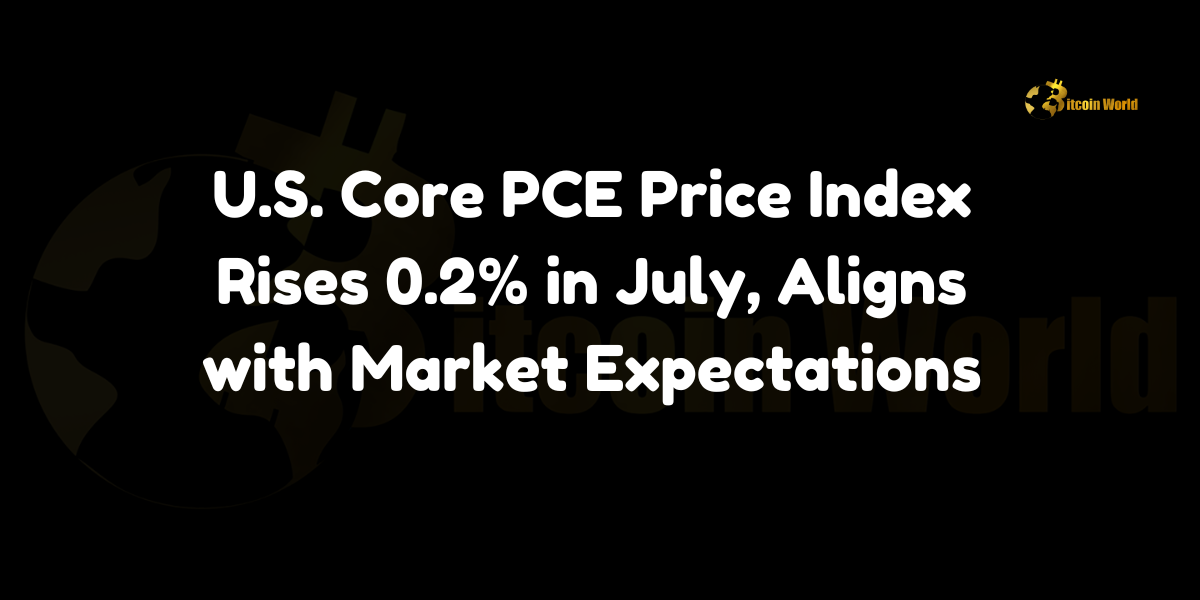Navigating the complex world of economic indicators can feel like deciphering a secret code. But fear not! The latest Core PCE Price Index data is here, and we’re breaking it down for you. Think of it as the economy’s vital signs – telling us how healthy (or not) our spending habits and inflation levels are. Let’s dive into the July 2024 report and see what it reveals about the U.S. economy.
Core PCE Price Index July 2024: What’s the Headline?
The Core PCE Price Index July 2024 figures, released by the U.S. Bureau of Economic Analysis (BEA), show a modest 0.2% increase from the previous month. This aligns with economists’ expectations and signals a continued focus on keeping inflation in check. But what does this really mean?
Monthly Increase: Right on Target
The 0.2% month-over-month rise in the Core PCE Price Index for July 2024 is precisely what the market anticipated. This suggests that inflationary pressures are stabilizing after a period of uncertainty. The core PCE index, which excludes volatile food and energy prices, serves as a crucial barometer for understanding underlying inflation trends in the U.S. economy. Meeting expectations indicates effective short-term inflation management.
Year-over-Year Growth: A Slight Surprise
The Core PCE Price Index increased by 2.6% year-over-year, a tad below the projected 2.7%. Although marginally lower, this could mean that inflation is easing more than initially thought. This is potentially good news for the Federal Reserve, which closely monitors inflation when making decisions about interest rates.
This slight dip from the expected year-over-year figure hints that inflation, while still present, might not be accelerating as rapidly as feared. This could give the Fed more leeway in its monetary policy decisions, perhaps allowing for a more gradual approach to adjusting interest rates.
Why Does the Core PCE Price Index Matter?
The Core PCE Price Index July 2024 report is a vital sign for the U.S. economy. It offers insights into consumer spending habits and inflation patterns. The core PCE is often regarded as the Fed’s preferred inflation gauge because it focuses on goods and services directly consumed by households.
Here’s why this report is so important:
- Monetary Policy: The Federal Reserve might interpret this data as a sign that inflation is under control, lessening the need for sharp interest rate hikes. However, the Fed will likely continue to monitor future reports before making any major policy shifts.
- Consumer Spending: Stable inflation could boost consumer spending, a key engine of the U.S. economy. If consumers are confident that prices aren’t rising too fast, they may be more inclined to spend, which supports economic growth.
- Market Reactions: Financial markets might respond favorably to the news that inflation isn’t accelerating faster than expected. This could increase investor confidence and potentially drive up stock prices in sectors sensitive to consumer spending and interest rates.
The Federal Reserve’s Balancing Act
The Federal Reserve’s primary goals are to maximize employment and maintain stable prices. The Core PCE Price Index is an essential tool for determining whether the Fed is meeting its inflation target, typically around 2%. While the 2.6% year-over-year increase is slightly above this target, it’s not excessively high, suggesting that inflation is within a manageable range.
Fed officials have stated that they are closely tracking inflation metrics like the Core PCE to determine the best course for monetary policy. Given that the July data aligns with expectations, the Fed might feel confident in its current strategy, potentially maintaining current interest rate levels in the short term. However, ongoing inflationary pressures will need to be monitored to ensure they don’t start accelerating again.
Key Takeaways
The Core PCE Price Index July 2024 report provides a snapshot of current inflation trends in the U.S. The monthly increase met market expectations, and the year-over-year rise was slightly below forecasts. This data suggests that while inflation remains a concern, it is not accelerating alarmingly, giving the Federal Reserve some flexibility in its policy decisions.
As the U.S. economy continues to navigate the challenges of inflation and economic growth, the Core PCE will remain a key indicator for policymakers and market participants alike. The slight moderation in year-over-year growth could indicate that the Fed’s efforts to control inflation are working, but vigilance will be crucial in the coming months.
To learn more about the innovative startups shaping the future of the crypto industry, explore our article on latest news, where we delve into the most promising ventures and their potential to disrupt traditional industries.
Disclaimer: The information provided is not trading advice, Bitcoinworld.co.in holds no liability for any investments made based on the information provided on this page. We strongly recommend independent research and/or consultation with a qualified professional before making any investment decisions.


